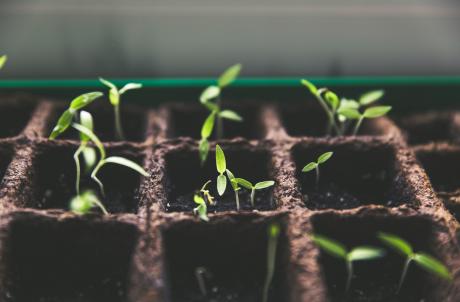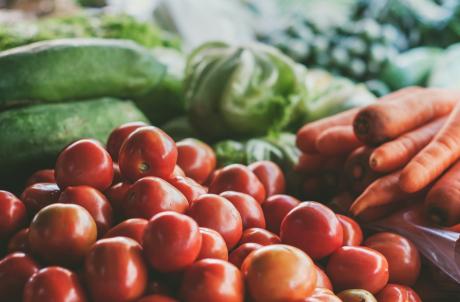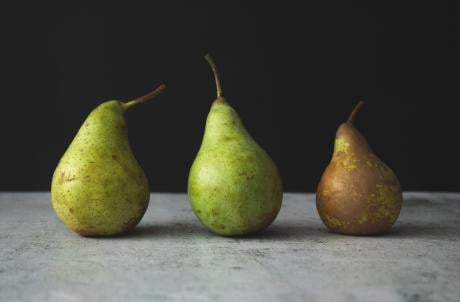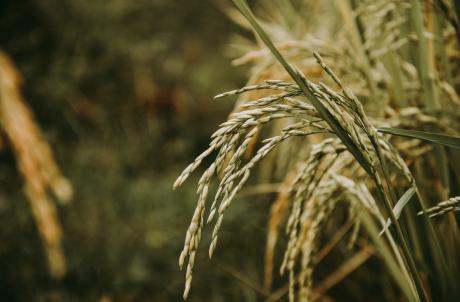In one of our previous blogs, we talked about our love for barcodes and how we went about achieving a fulfilment rate of 99.8%. In this post, we will tell you how we go about delivering those crates from our warehouses to our customer’s doorstep.
In an on-demand business like ours, logistics is a critical operational capability that helps in ensuring a good customer experience. Moreover, we continuously strive to improve delivery systems to meet promised delivery times in a cost efficient manner to have better financial health ourselves.
Our supply chain transports processed orders from warehouses to our aggregation centres to combine Groceries and Fresh items of the order and then to a customer’s delivery location. However, in a country like ours, this may not be as easy as it sounds.
Typically, customer orders for groceries vary from daily consumption to a weekend party that they would be hosting. That means an order can weigh anywhere from 1 kg to 55 kg (trust me!). The customer can also be located in any part of the town with varying delivery time. For delivering the order, a typical logistics fleet will have delivery executives on bikes and larger vans such as the Eeco. Vans can deliver multiple orders in one go but one needs a bike for delivery in congested areas like Chandni Chowk of Delhi where vans cannot navigate easily.
In a basic set-up, the delivery executives will be given a list of orders with customer details. It is for them to decide, on their own, which route to take to make on-time deliveries. So, the problem is then to balance the orders as per van or bike capacity in the fleet, as per weight and location, to efficiently meet the delivery time promise made to the customer.
“The line between disorder and order lies in logistics” — Sun Tzu, The Art of War
It’s technology which helps us to solve this daunting puzzle.
We have built a route planning system to plan all customer deliveries in an optimal manner, by taking into consideration various parameters such as like Delivery SLA’s, order weight and minimum distance.
Geocoding is an intricate part of the logistics puzzle in identifying a customer’s location to build an optimal route. If the system has coordinates with a 200m variance, it can mean that the delivery executives will have to cross a congested signal in Bangalore which can delay delivery by 10 mins; or worse, take a u-turn at a flyover in Mumbai which can make him travel for an additional 15 mins. A geocoder provides us with accurate drop locations that result in faster deliveries. We continuously clean up the customer addresses in order to make them more accurate.
We use Google Optimization tools (OR Tools) to solve combinatorial optimization problem for route generation and Open Source Routing Machine (OSRM) for distance calculation between two coordinates and geocoding. Deliveries are scheduled prior to the actual day of the delivery, giving our systems the input required to provide logical route planning and load balancing solutions. Now after the magic in the background, our operations team brings the curtains down.
Based on the routes generated, the orders are sorted and segregated at the aggregation center to ensure easy dispatch. Orders are stacked in the sequence of actual deliveries. Once loaded in the van, they are stacked in a LIFO manner i.e. crates of first customer to be delivered are stacked at the end. This saves crucial time in servicing a customer as per delivery slot.
At the pre-defined cut off time before scheduled delivery, our delivery executive gets the route orders on his app.

(Pic shows a screen of the Grofers Delivery App with the order and customer information)
Once the delivery executive picks up all the assigned orders, he is shown the in-app routing sequence for delivery. The customer is also notified on dispatch and can track the order status on his/her app.
We currently deliver in slots of 2 hours each. So for a order with a promised delivery time of 8 am to 10 am, our executive can reach at any time within this period. We understand that customers lead a hectic lifestyle and might have other plans and may want to be further aware of the time of delivery.
To provide visibility of order status and expected time of delivery, in our latest version of consumer app we keep you updated on the state of the current order and estimated time of delivery. Based on the delivery executive’s location and orders’ pipeline before reaching your location, we calculate the Estimate Time of Delivery (ETD) based on the current traffic situation.
Along with optimization on the delivery process, we also ensure that products are handled well in transit. Typically, a Grofers order will have groceries, fresh produce and refrigerated items. Grocery and fresh items are packed in barcoded crates. Cold items are kept in barcoded ice boxes. For better visibility to the delivery executive on all items, his app shows the number of crates and iceboxes to be delivered as well as handling details for each item, so that he doesn’t forget to pick or deliver any item.

(Pic shows a screen of the Grofers Delivery App: Order details with item and crate details)
There’s more! Before taking a customer’s signature as proof of delivery, the executive cross-verifies the list of items being delivered to the customer. We want to ensure that the items delivered meet your expectations, so the executive performs a Quality Check at your doorstep. He would open the sealed crate and do the inspection. If any item doesn’t match your expectations, he would initiate the refund right there. Our team reviews all such instances to figure the root causes and takes measure to prevent them.
In lieu of the demonetization drive, we had also added a ‘Payment on Delivery’ option. We now offer multiple payment options like Wallets (PayTM/Mobikwik), Card Payments as well as Sodexo Coupons in addition to Cash on Delivery.

(Pic shows a screen of the Grofers Delivery App: Payment on Delivery options)
We understand our delivery executive is our only touchpoint with most of you and he represents Grofers at your doorstep. We invest a lot in training our executives through online and offline mediums in order to provide you with a better customer experience. To this extent, he is mandated to undergo offline training which is reinforced through training videos that are sent to him.
I’ll sign off by saying that, at Grofers, we put a lot of conscious effort in providing you with a great customer experience across every touchpoint - be it our website, app, CRM chat or doorstep delivery. Please let us know how would you like us to improve our offerings even further..








